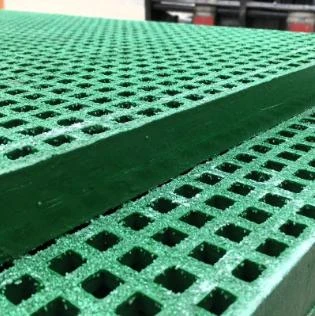loading...
- No. 9, Xingyuan South Street, Dongwaihuan Road, Zaoqiang County, Hengshui, Hebei, China
- admin@zjcomposites.com
- +86 15097380338
- Welcome to visit our website!
Innovative Applications of FRP Structural Sections in Modern Engineering Design
FRP Structural Sections Innovations in Modern Construction
Fiber Reinforced Polymer (FRP) materials have revolutionized the construction industry over the past few decades. Their unique properties, including high strength-to-weight ratios, corrosion resistance, and flexibility, make them an ideal choice for various structural applications. One of the most significant advancements in this field is the development of FRP structural sections, which are gradually replacing traditional materials like steel and concrete in many applications.
FRP composites typically consist of a polymer matrix reinforced with fibers, such as glass, carbon, or aramid. The choice of fiber affects the performance characteristics of the final product, tailoring it to specific applications. Glass fiber reinforced polymer (GFRP) is one of the most commonly used types in structural sections, thanks to its excellent balance of strength, weight, and cost-effectiveness.
Advantages of FRP Structural Sections
1. Corrosion Resistance One of the most notable advantages of FRP materials is their resistance to corrosion. Unlike steel, which can rust and deteriorate when exposed to moisture and chemicals, FRP maintains its integrity in harsh environments. This property makes it particularly suitable for bridges, marine structures, and chemical processing facilities where exposure to corrosive elements is a concern.
2. Lightweight The lightweight nature of FRP structural sections allows for easier handling and installation. Construction projects can be executed more efficiently, leading to reduced labor costs and shorter project timelines. Additionally, lightweight materials can lead to savings in foundation requirements since the load on supporting structures is minimized.
3. Design Flexibility FRP can be fabricated into various shapes and sizes, offering greater design flexibility than traditional materials. This adaptability allows engineers and architects to create innovative structures with complex geometries that would be challenging or impossible to achieve using conventional materials.
4. High Strength Despite their light weight, FRP structural sections exhibit high tensile and compressive strengths, making them suitable for load-bearing applications. This strength enables the construction of longer spans without additional supports, which can open up new possibilities in architectural design.
5. Reduced Maintenance Due to their durability and resistance to environmental factors, FRP structures typically require less maintenance over their lifespan when compared to conventional materials. This attribute translates to lower long-term costs and fewer disruptions in service.
frp structural sections

Applications of FRP Structural Sections
The versatility of FRP has led to its application in various fields within the construction industry
. Some key applications include- Bridges FRP structural sections are being increasingly used in bridge construction, where their lightweight nature and corrosion resistance are invaluable. Bridges made from FRP can span longer distances and require less maintenance over time.
- Building Frames In commercial and residential construction, FRP can be used in the framing of buildings, particularly in areas prone to seismic activity. The flexibility of FRP allows structures to withstand dynamic forces without cracking or failing.
- Reinforcement FRP composites are also used as external reinforcement for concrete structures, improving their load-bearing capacity and extending their service life. This application is particularly beneficial for retrofitting aging infrastructure.
- Marine Structures Due to their corrosion resistance, FRP materials are ideal for use in docks, piers, and other marine facilities. Their performance in saline environments ensures longevity and reliability.
Conclusion
The emergence of FRP structural sections marks a significant step forward in material science and engineering. As the construction industry continues to seek lighter, stronger, and more durable materials, FRP is poised to play a vital role in shaping the built environment of the future. Ongoing research and development in this field will likely lead to even more innovative applications, making FRP an essential material for sustainable and modern construction practices.
-
GRP Structures: The Future of Lightweight, High-Performance EngineeringNewsJun.20,2025
-
FRP Water Tank: High-Performance Storage for Corrosive and Clean Water SystemsNewsJun.20,2025
-
FRP Square Tube: The New Industry Standard for Chemical and Structural ApplicationsNewsJun.20,2025
-
FRP Pultruded Profiles: The Ultimate Choice for Lightweight Structural StrengthNewsJun.20,2025
-
FRP Handrails: The Safer, Smarter, and Stronger Choice for Modern InfrastructureNewsJun.20,2025
-
FRP Grating: The Smart Solution for Durable, Lightweight Industrial FlooringNewsJun.20,2025
-
Why Choose a Galvanized Water Tank for Your Storage NeedsNewsMay.21,2025
